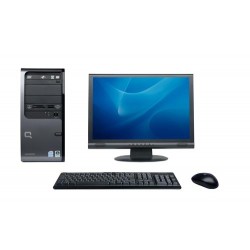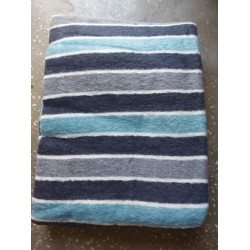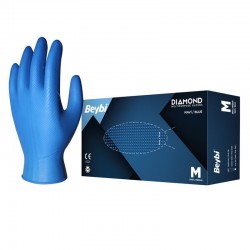
 has become an increasingly popular business model, and Shopify is one of the leading platforms for entrepreneurs looking to start their own dropshipping venture. With the rise of e-commerce and the ease of accessing global markets, starting a dropshipping business on Shopify has never been easier. But where do you begin? If you're new to this concept, don't worry. In this article, we will guide you through the process of starting a dropshipping business on Shopify, from choosing the right products to setting up your online store. So, if you're eager to launch your own successful online business, keep reading to learn how to get started with dropshipping on Shopify.
has become an increasingly popular business model, and Shopify is one of the leading platforms for entrepreneurs looking to start their own dropshipping venture. With the rise of e-commerce and the ease of accessing global markets, starting a dropshipping business on Shopify has never been easier. But where do you begin? If you're new to this concept, don't worry. In this article, we will guide you through the process of starting a dropshipping business on Shopify, from choosing the right products to setting up your online store. So, if you're eager to launch your own successful online business, keep reading to learn how to get started with dropshipping on Shopify.
Choosing the Right Products for Your Shopify Dropshipping Business
When it comes to running a successful Shopify dropshipping business, one of the most crucial decisions you'll make is choosing the right products to sell. Finding profitable products that align with your target market's needs and preferences is key to driving sales and growing your business. In this article, we'll walk you through the process of selecting the perfect products for your Shopify dropshipping store, ensuring that you optimize for SEO and engage your readers with valuable information.
To gather this valuable information, start by conducting market research and analyzing data from your existing customer base. Use tools like Google Analytics and social media analytics to gain insights into your audience's preferences and identify potential product niches.
Identifying Profitable Niches
Once you have a clear understanding of your target audience, the next step is to identify profitable niches for your Shopify dropshipping business. Look for product categories or subcategories that have high demand but low competition, as this will increase your chances of success.
Use keyword research tools like Google Keyword Planner or SEMrush to identify relevant keywords that are being searched for frequently. Look for long-tail keywords that have high search volume and low competition to find lucrative product niches to explore.
Choosing High-Quality Products
When selecting products to sell in your Shopify dropshipping store, quality should be a top priority. Look for suppliers and manufacturers that offer high-quality products that align with your target audience's expectations. Your reputation and customer satisfaction rely heavily on providing quality products.
Research potential suppliers thoroughly, checking for customer reviews, product samples, and certifications. Take the time to vet suppliers and verify that they meet your standards for quality and reliability.
Optimizing for SEO
While selecting the right products is essential, optimizing your Shopify store for SEO is equally important. SEO helps improve your store's visibility in search engine results and drives organic traffic to your site.
Ensure that you incorporate relevant keywords naturally throughout your product descriptions, meta tags, URLs, and content. Focus on providing unique and valuable content that appeals to both search engine algorithms and your audience.
Conclusion
Choosing the right products for your Shopify dropshipping business is a critical step that requires careful consideration. By understanding your target audience, identifying profitable niches, selecting high-quality products, and optimizing for SEO, you'll be on your way to building a successful dropshipping business. Take the time to research, analyze, and make informed decisions to position your store for growth and profitability.
Setting Up Your Shopify Store for Dropshipping Success
Welcome to our guide on setting up your Shopify store for dropshipping success! In this article, we'll walk you through the steps to create a profitable online store using Shopify and the essential strategies to maximize your dropshipping business. Whether you're new to dropshipping or looking to improve your existing store, this guide will provide valuable insights and tips to help you succeed in the competitive ecommerce market.
1. Choosing the Right Products
One of the key factors in dropshipping success is selecting the right products to sell. Conduct thorough market research to identify trending or niche products with high demand. Use keyword research tools, such as Google Keyword Planner, to determine the popularity of potential products and optimize your website content.
Additionally, consider the profit margin and competition for each product. It's best to choose products with a decent profit margin and manageable competition to increase your chances of success. Remember to focus on products that align with your target audience's interests and preferences.
2. Creating a User-Friendly Website
A user-friendly website is crucial to attract and retain customers. When setting up your Shopify store, pay attention to the following elements:
- Responsive Design: Ensure your website is optimized for mobile devices, as a significant portion of online shopping is done through smartphones and tablets.
- Clear Navigation: Make it easy for visitors to navigate through your website by organizing products into categories and subcategories. Use descriptive labels and intuitive menus.
- Fast Loading Speed: Minimize page loading time to enhance user experience. Compress images, choose a reliable web hosting provider, and optimize your website's performance.
- Secure Checkout Process: Implement secure payment gateways and SSL certificates to protect customer information and build trust.
3. Implementing Effective SEO Strategies
Optimizing your Shopify store for search engines is essential to increase visibility and attract organic traffic. Here are some SEO tips to consider:
- Keyword Research: Identify relevant keywords and incorporate them naturally into your product titles, descriptions, meta tags, and URLs. Use long-tail keywords for better targeting.
- High-Quality Content: Create informative and engaging product descriptions, blog posts, and landing pages. Provide valuable information that educates and convinces potential customers.
- Website Structure: Use proper header tags (h1, h2, etc.) to structure your content and help search engines understand its relevance. Maintain a clear hierarchy throughout your website.
- Link Building: Build quality backlinks to your Shopify store from reputable websites. Guest posting, influencer collaborations, and social media promotions are effective link-building strategies.
4. Effective Marketing Strategies
To drive traffic and generate sales, it's crucial to implement effective marketing strategies. Consider the following tactics:
- Social Media Marketing: Leverage popular social media platforms to promote your products, engage with customers, and build a loyal following. Use eye-catching visuals, compelling captions, and relevant hashtags.
- Influencer Partnerships: Collaborate with influencers in your niche to showcase your products to their audience. Choose influencers with engaged followers who align with your target market.
- Email Marketing: Build an email list of interested customers and send targeted campaigns to promote product launches, discounts, and other exclusive offers. Personalize your emails to maximize engagement.
- PPC Advertising: Consider running Pay-Per-Click (PPC) advertising campaigns on platforms like Google Ads or Facebook Ads to increase visibility and drive immediate traffic to your store.
By following these steps and implementing the strategies outlined in this guide, you'll be on your way to setting up a successful Shopify store for dropshipping. Remember to continuously monitor and optimize your store based on customer feedback and market trends to stay ahead of the competition. Good luck!
Finding Reliable Suppliers for Your Shopify Dropshipping Business
When it comes to running a successful Shopify dropshipping business, finding reliable suppliers is essential. As the backbone of your business, suppliers play a crucial role in providing quality products and ensuring timely delivery to your customers. In this article, we will explore effective strategies to help you find trustworthy suppliers for your dropshipping business.
Do Your Research
Before entering into any business relationship, it's important to conduct thorough research on potential suppliers. Start by using search engines and online directories to find a list of potential suppliers in your niche. Pay close attention to customer reviews, ratings, and testimonials to get insights into their reputation and reliability.
Tip: Look for suppliers with a track record of positive feedback and a high satisfaction rate among previous clients.
Attend Trade Shows
Trade shows are an excellent way to connect with suppliers face-to-face and establish personal relationships. Attend industry-specific trade shows and exhibitions to meet suppliers directly, discuss their offerings, and evaluate their reliability.
Tip: Prepare a list of questions to ask suppliers at the trade show, focusing on their production capabilities, quality control procedures, and shipping methods.
Join Online Supplier Directories
Joining reputable online supplier directories can also help you discover reliable suppliers for your dropshipping business. Platforms like Alibaba, SaleHoo, and Worldwide Brands provide extensive lists of verified suppliers in various industries.
Tip: While using online directories, pay attention to supplier certifications, years of experience, and customer reviews to assess their reliability.
Network with Other Dropshippers
Networking with other dropshippers can be a valuable source for finding reliable suppliers. Engage in online communities, forums, and social media groups to connect with fellow entrepreneurs in your industry. Share experiences, ask for recommendations, and exchange information related to suppliers.
Tip: Building strong relationships with other dropshippers can open up opportunities for collaboration and joint supplier sourcing.
Communicate with Potential Suppliers
Once you have identified potential suppliers, it's important to communicate with them and ask specific questions to gauge their reliability. Inquire about their shipping times, quality control measures, return policies, and communication channels.
Tip: Pay attention to the promptness and professionalism of their responses, as these reflect their commitment to customer service.
| Key Considerations When Choosing Suppliers | |
|---|---|
| 1 | Reliability: Ensure the supplier has a proven track record of delivering products on time and meeting customer expectations. |
| 2 | Product Quality: Verify the supplier's quality control measures to ensure consistent product quality. |
| 3 | Cost-Effective Pricing: Consider the supplier's pricing structure and compare it with competitors to ensure profitability. |
| 4 | Flexibility: Assess the supplier's ability to adapt to changing market demands and support your business growth. |
| 5 | Communication: Establish clear lines of communication with the supplier to address any concerns or issues promptly. |
By following these strategies and considering the key considerations mentioned above, you can find reliable suppliers for your Shopify dropshipping business. Remember, building strong supplier relationships is crucial for the long-term success of your business.
Good luck!
Marketing and Promoting Your Shopify Dropshipping Business
Starting a dropshipping business on Shopify can be an exciting venture. However, in order to succeed, it's crucial to have a solid marketing and promotion strategy in place. In this article, we will explore some effective strategies that can help you effectively market and promote your Shopify dropshipping business.
- Create Compelling Product Descriptions: One of the key aspects of marketing your dropshipping products is to have compelling and SEO-friendly product descriptions. Ensure that your descriptions are informative, engaging, and highlight the unique selling points of your products. Use relevant keywords naturally to optimize your product pages for search engines.
- Optimize Your Store for SEO: To increase your chances of being discovered by potential customers, it's important to optimize your Shopify store for search engines. Focus on optimizing your website's meta tags, including title tags and meta descriptions, with relevant keywords. Additionally, optimize your URLs, headings, and image alt texts to improve your store's visibility on search engine result pages.
- Use Social Media Marketing: Social media platforms offer a great opportunity to promote your dropshipping business. Create engaging and shareable content that showcases your products and encourages user interaction. Utilize popular social media platforms such as Facebook, Instagram, and Pinterest to reach a wider audience and drive traffic to your Shopify store.
- Collaborate with Influencers: Influencer marketing can be a powerful tool in promoting your dropshipping business. Identify influencers in your niche who have a significant following and high engagement rates. Collaborate with them to showcase your products to their audience through sponsored posts, reviews, or giveaways. This can help increase brand awareness and drive targeted traffic to your Shopify store.
- Implement Email Marketing: Building an email list and implementing email marketing campaigns can significantly boost your dropshipping business. Offer incentives such as exclusive discounts or freebies in exchange for email sign-ups. Use email marketing to engage with your audience, promote new products, and offer personalized recommendations based on their purchase history.
- Run Paid Advertising Campaigns: Another effective way to promote your Shopify dropshipping business is through paid advertising campaigns. Consider using platforms such as Google Ads or Facebook Ads to target your audience based on demographics, interests, and behaviors. Optimize your ads with compelling copy, eye-catching visuals, and clear call-to-actions to drive traffic and conversions.
Remember, marketing and promoting your Shopify dropshipping business requires consistent effort and experimentation. Monitor your marketing campaigns, analyze the results, and make necessary adjustments to ensure you are reaching your target audience effectively. By implementing these strategies and continuously refining your approach, you can increase brand visibility, drive traffic, and ultimately boost sales for your dropshipping business.
Managing Your Orders and Customer Service in a Shopify Dropshipping Business
In a Shopify dropshipping business, managing orders effectively is crucial for success. With the right strategies in place, you can streamline your operations and provide excellent customer service. This article will guide you through the essential steps to efficiently manage your orders and provide top-notch customer support.
Understanding the Dropshipping Model
Before diving into order management, let's briefly understand the dropshipping model. Dropshipping allows you to sell products without stocking inventory. When a customer places an order on your Shopify store, you simply forward the order details to a supplier, who then ships the products directly to the customer. This business model offers low upfront costs and eliminates the need for storage and shipping logistics.
However, to succeed in dropshipping, proper order management is essential. Let's explore some key strategies:
Implementing an Efficient Order Fulfillment Process
An efficient order fulfillment process is crucial to ensure timely delivery and a smooth customer experience. Here are some key steps:
- Automate Order Forwarding: To streamline the process, utilize Shopify's built-in features or third-party apps to automatically forward customer orders to your suppliers. This eliminates the need for manual order placement and saves you time.
- Track Order Status: Stay updated on the status of your orders. Regularly communicate with your suppliers to ensure the products are shipped promptly. Utilize tracking tools to keep your customers informed about their order's progress.
- Handle Returns Professionally: Effective return management is crucial for customer satisfaction. Have a clear return policy in place, and promptly handle return requests. By offering hassle-free returns, you build trust and enhance your brand reputation.
Delivering Outstanding Customer Service
In a competitive online marketplace, exceptional customer service sets you apart from the competition. To provide top-notch support, consider the following:
- Respond Promptly: Aim to respond to customer inquiries within 24 hours. Utilize templates and canned responses to speed up your response time while maintaining a personalized touch.
- Offer Multiple Contact Channels: Provide your customers with various communication options, such as email, live chat, and phone support. This allows them to reach out in a way that is convenient for them.
- Be Knowledgeable about Your Products: Educate yourself about your products to answer customer questions accurately. This demonstrates expertise and builds trust with your customers.
Optimizing Your Shopify Store for SEO
To drive organic traffic to your Shopify store, optimizing your website for search engines is vital. Follow these SEO best practices:
- Keyword Research: Use tools like Google Keyword Planner to identify relevant keywords related to your products. Incorporate these keywords naturally into your product descriptions and blog content.
- Optimized Meta Tags: Craft compelling meta titles and descriptions, including your target keywords. This helps search engines understand your content and improves click-through rates from search results.
- Mobile Optimization: Ensure your Shopify store is mobile-friendly. With the increasing number of mobile shoppers, having a responsive website is crucial for better user experience and higher search engine rankings.
By following these tips on order management, customer service, and SEO optimization, you can successfully run your Shopify dropshipping business with ease. Remember, providing value to your customers and prioritizing their satisfaction will ultimately lead to long-term success in the dropshipping industry.
For more information on managing your orders and customer service in a Shopify dropshipping business, check out the Shopify Help Center.
Frequently Asked Questions
What is dropshipping?
Dropshipping is a business model where you can sell products online without stocking them yourself. Instead, you partner with a supplier who handles the inventory and shipping of the products directly to your customers.
How do I start a dropshipping business on Shopify?
To start a dropshipping business on Shopify, follow these steps: 1. Sign up for a Shopify account. 2. Choose a theme for your online store. 3. Add products to your store using the Oberlo app or by connecting with other dropshipping suppliers. 4. Customize your store's appearance and settings. 5. Set up your payment and shipping options. 6. Launch your store and start promoting your products. 7. Handle orders and customer inquiries. 8. Continuously optimize your store for better conversions and sales.
Do I need to have my own products to start dropshipping on Shopify?
No, you don't need to have your own products to start dropshipping on Shopify. You can source products from various suppliers and add them to your store. When a customer places an order, the supplier will fulfill and ship the product directly.
How do I find dropshipping suppliers for my Shopify store?
To find dropshipping suppliers for your Shopify store, you can use platforms like Oberlo, Spocket, or AliExpress. These platforms allow you to connect with suppliers who offer a wide range of products for dropshipping.
Is dropshipping profitable?
Dropshipping can be profitable if executed properly. The key to success is choosing the right products, marketing effectively, and providing excellent customer service. It's important to do thorough research and continually optimize your store for better conversions and profitability.
What are the advantages of dropshipping on Shopify?
Some advantages of dropshipping on Shopify include: 1. Ease of use: Shopify provides a user-friendly platform for setting up and managing your online store. 2. Wide range of integrations: Shopify integrates with various apps and tools to enhance your store's functionality. 3. Large supplier network: You can access a wide range of dropshipping suppliers through platforms like Oberlo. 4. Flexibility: Dropshipping allows you to work from anywhere and doesn't require upfront investment in inventory.
Are there any disadvantages of dropshipping on Shopify?
Some potential disadvantages of dropshipping on Shopify are: 1. Lower profit margins: Since you don't have control over the product pricing, your profit margins may be lower compared to selling your own products. 2. Competition: Dropshipping is a popular business model, so you may face competition from other sellers. 3. Dependence on suppliers: Your business relies on the suppliers to fulfill and ship the products, so any issues on their end can affect customer satisfaction.
How can I market my dropshipping products?
There are several ways to market your dropshipping products: 1. Social media marketing: Use platforms like Facebook, Instagram, and Pinterest to showcase your products and engage with your target audience. 2. Influencer partnerships: Collaborate with influencers who have a relevant audience to promote your products. 3. Search engine optimization (SEO): Optimize your store's content and product descriptions to rank higher in search engine results. 4. Email marketing: Build an email list and send targeted promotions and updates to your subscribers. 5. Paid advertising: Run ads on platforms like Google AdWords or Facebook Ads to reach a wider audience.
Can I run a dropshipping business while working a full-time job?
Yes, it is possible to run a dropshipping business while working a full-time job. However, it requires good time management, outsourcing certain tasks, and automating processes as much as possible. It's important to allocate dedicated time for managing your store and fulfilling customer orders.
What are some recommended Shopify apps for dropshipping businesses?
Some recommended Shopify apps for dropshipping businesses are: 1. Oberlo: Helps you import products from suppliers and automatically fulfill orders. 2. Spocket: Connects you with suppliers offering fast shipping and high-quality products. 3. Yotpo: Allows you to collect and display customer reviews to build trust. 4. Plug in SEO: Helps optimize your store for better search engine rankings. 5. Klaviyo: Enables targeted email marketing campaigns. 6. Smile: Helps you set up a rewards program to incentivize customer loyalty. 7. Privy: Allows you to create pop-ups and email capture forms to grow your subscriber list.
















